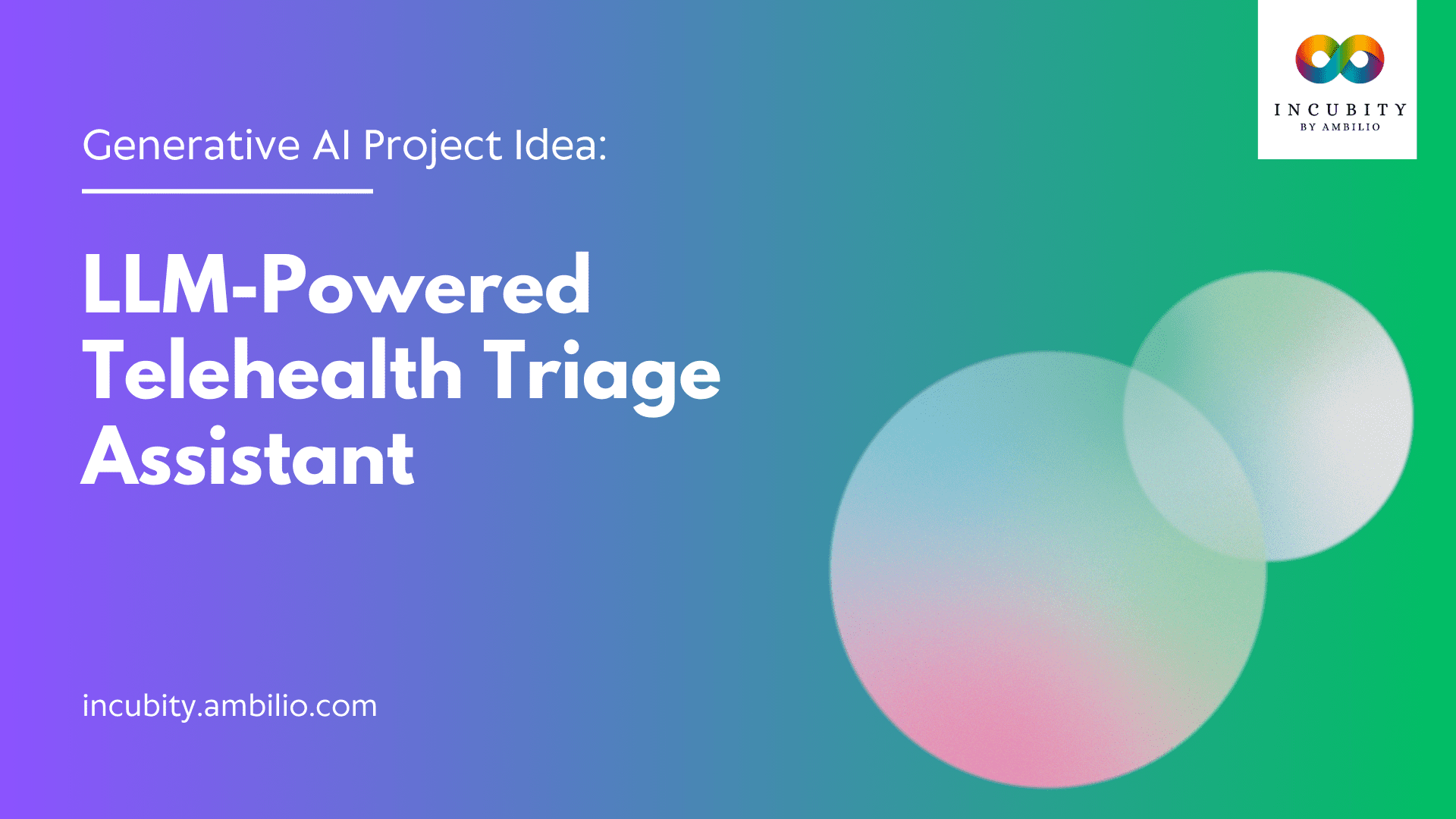In the evolving landscape of healthcare, telehealth services have become a vital component, offering patients remote access to medical care. To enhance the efficiency and accuracy of telehealth services, an LLM-powered Telehealth Triage Assistant can play a crucial role. This system will intake telehealth requests, gather relevant information, triage cases, and provide appropriate care recommendations. In this guide, we will outline the key components, benefits, and steps to develop a LLM-Powered Telehealth Triage Assistant system in healthcare.
Key Components
Following are the major components of LLM-Powered Telehealth Triage Assistant system:
1. Conversational Interface
A conversational interface serves as the primary point of interaction between the patient and the Telehealth Triage Assistant. This interface should be intuitive and user-friendly, capable of engaging patients in natural language dialogue to collect necessary information about their symptoms and medical history.
- Web-Based Chatbot: A text-based interface accessible through web browsers.
- Voice-Based Virtual Assistant: An AI-powered voice interface that can interact with patients via smart speakers or phone calls.
- Multimodal Interface: A combination of text and voice interfaces to provide a seamless user experience.
2. Medical Knowledge Base
A comprehensive and up-to-date medical knowledge base is essential for making informed triage decisions. This database should include detailed information about various medical conditions, symptoms, and treatment protocols.
- Symptoms and Conditions: Detailed descriptions of symptoms and associated medical conditions.
- Treatment Protocols: Standard guidelines and protocols for treating different medical conditions.
- Medical Literature: Access to medical journals, research papers, and clinical guidelines.
3. Triage and Decision-Making Models
The core of the Telehealth Triage Assistant is its ability to analyze patient inputs and determine the appropriate level of care. This requires sophisticated machine learning (ML) and natural language processing (NLP) models.
- Symptom Analysis: NLP models that can interpret and categorize patient-reported symptoms.
- Decision Support: ML models that cross-reference patient inputs with the medical knowledge base to recommend the appropriate level of care.
4. Care Coordination and Scheduling
Once the triage decision is made, the system should provide clear next steps for the patient and facilitate scheduling an appointment with the appropriate healthcare provider.
- Appointment Scheduling: Integration with healthcare providers’ scheduling systems to book appointments.
- Care Navigation: Guidance on whether the patient should seek self-care, a virtual consultation, an in-person visit, or emergency care.
5. Continuous Learning and Improvement
To ensure the system remains accurate and effective, it must continuously learn from new data and feedback.
- Performance Monitoring: Regularly track and analyze the system’s performance.
- Feedback Mechanism: Collect feedback from patients and healthcare providers to refine the models and knowledge base.
- Model Updates: Periodically update the ML and NLP models with new data and insights.
Benefits of a LLM-Powered Telehealth Triage Assistant
LLM-Powered Telehealth Triage Assistant systems in healthcare offers several key advantages:
Natural Conversational Abilities
LLMs can engage patients in natural, human-like dialogues, making the interaction more comfortable and effective. They can understand and respond to a wide range of patient inputs, from simple symptom descriptions to complex medical histories.
Broad Medical Knowledge
LLMs can be trained on vast amounts of medical literature and data, giving them a deep understanding of medical conditions, symptoms, and treatment protocols. This extensive knowledge base allows the system to make more accurate and informed triage decisions.
Contextual Reasoning
LLMs excel at contextual reasoning, enabling them to analyze patient inputs in the broader context of their medical history and symptoms. This capability ensures that the triage decisions are not only accurate but also tailored to the individual patient’s circumstances.
Continuous Improvement
As the system processes more interactions, the LLM-based models can continuously learn and improve. This continuous learning ensures that the Telehealth Triage Assistant remains up-to-date with the latest medical knowledge and trends, enhancing its accuracy and reliability over time.
Implementation Steps
To develop a LLM-Powered Telehealth Triage Assistant, the following steps are involved:
1. Requirements Gathering
The first step is to engage with healthcare providers, patients, and other stakeholders to understand their needs and requirements. This involves defining the scope, features, and functionalities of the Telehealth Triage Assistant.
2. Data Collection
Collect a diverse set of medical records, symptom descriptions, and patient interactions to train the LLM. Ensure that the data is anonymized and secure, adhering to regulations like HIPAA to protect patient privacy.
3. LLM Development and Training
Train the LLM on medical literature, symptom databases, and patient interaction logs. Fine-tune the model to ensure high accuracy in symptom interpretation and severity assessment.
4. System Design and Development
Develop the patient portal and healthcare provider dashboard. Integrate the LLM with the user interface and EHR systems to create a seamless and efficient workflow.
5. Testing and Validation
Conduct extensive testing with synthetic and real patient data to validate the accuracy and reliability of the triage recommendations. Perform usability testing to ensure the interface is intuitive and easy to use.
6. Deployment
Deploy the system in a controlled environment initially, such as a pilot program with a limited number of users. Monitor performance and gather feedback for further refinements.
7. Scaling and Optimization
Scale the system to accommodate more users and integrate with additional healthcare providers and systems. Continuously optimize the algorithm based on new data and feedback to improve its accuracy and efficiency.
Final Words
Developing an LLM-Powered Telehealth Triage Assistantcan significantly enhance the efficiency and accuracy of telehealth services. By leveraging the capabilities of large language models, this system can engage patients in natural conversations, make informed triage decisions, and provide clear guidance on the appropriate level of care. With continuous learning and improvement, the Telehealth Triage Assistant can remain a valuable tool in the evolving landscape of healthcare, ensuring that patients receive timely and accurate medical advice.



